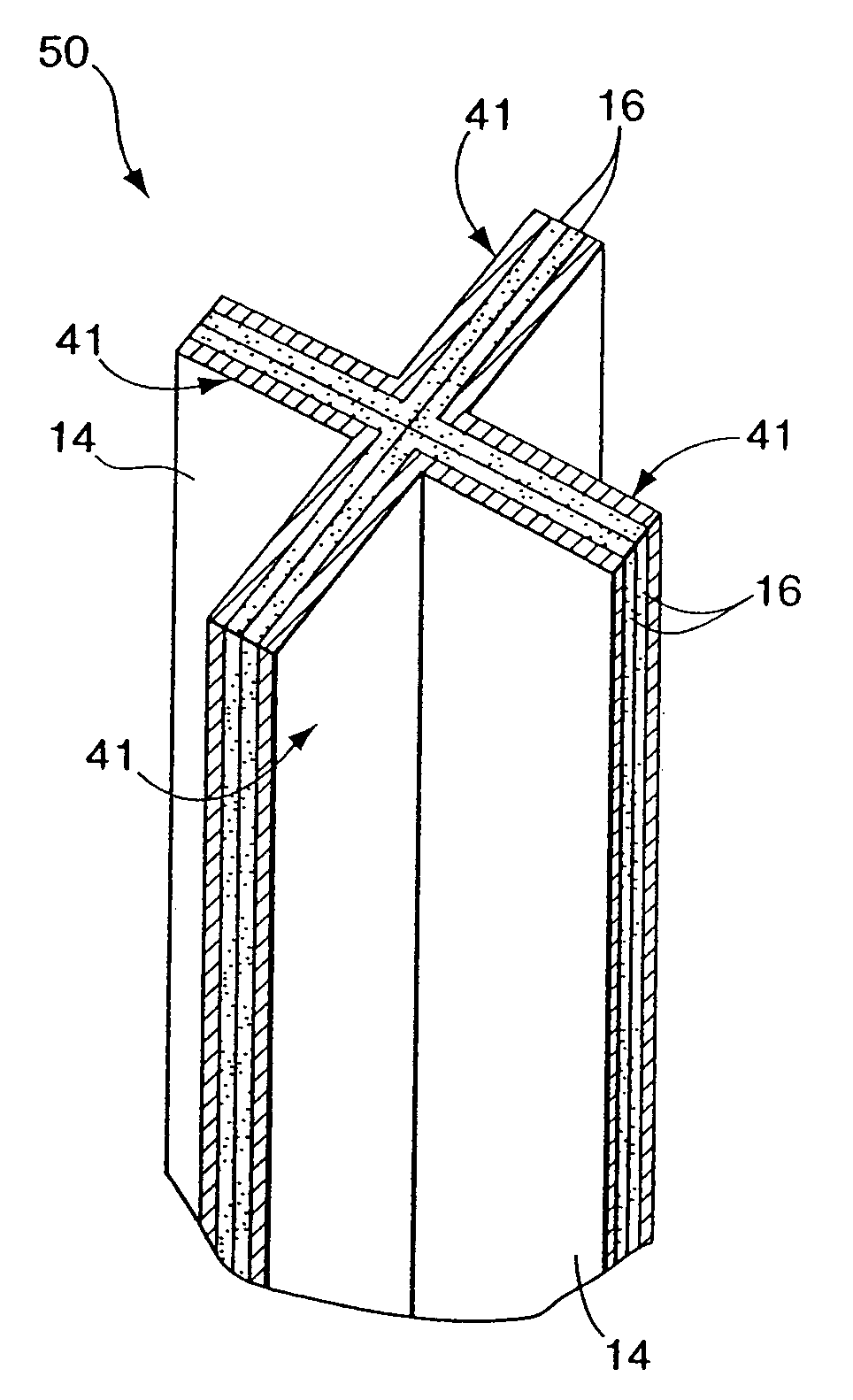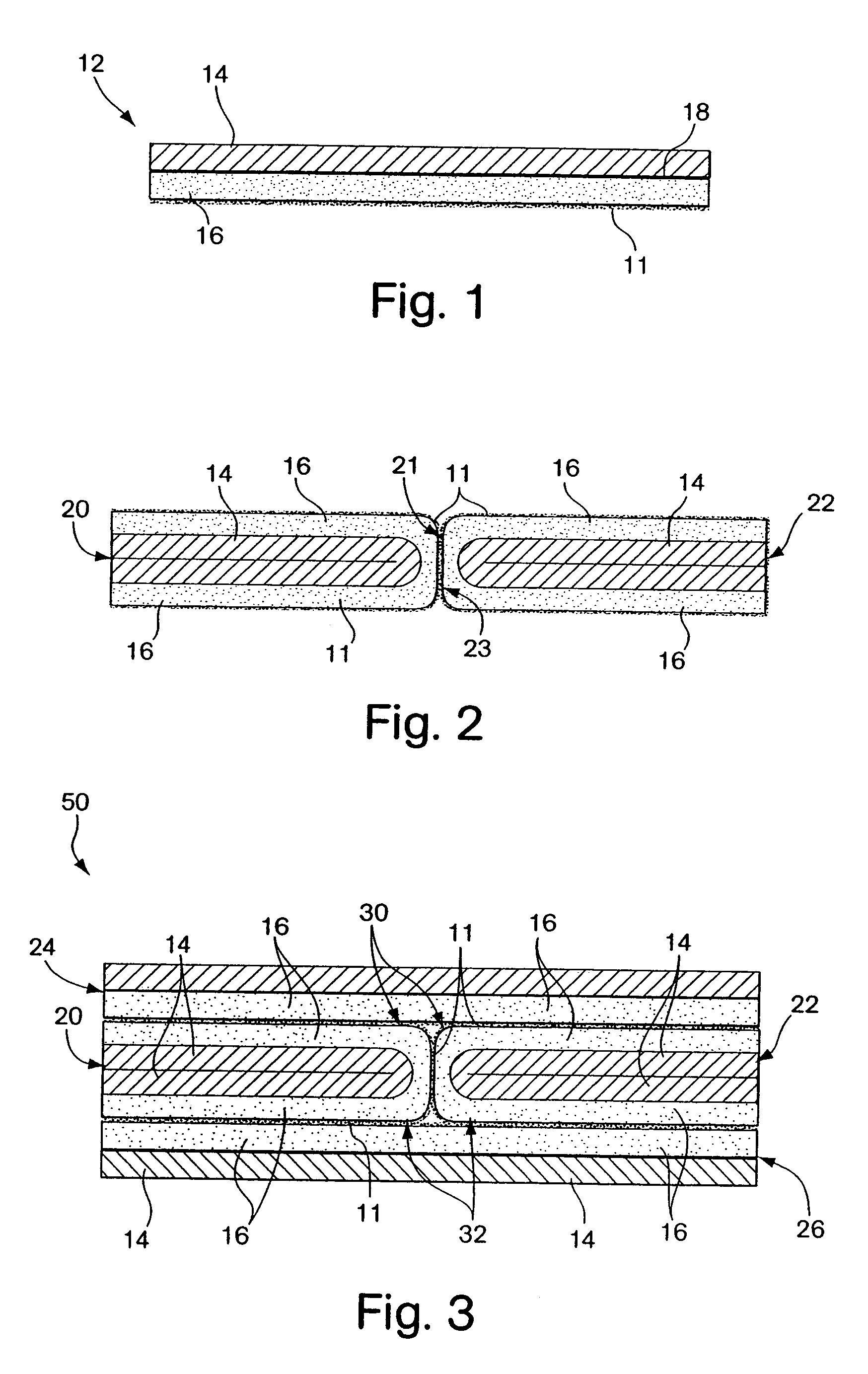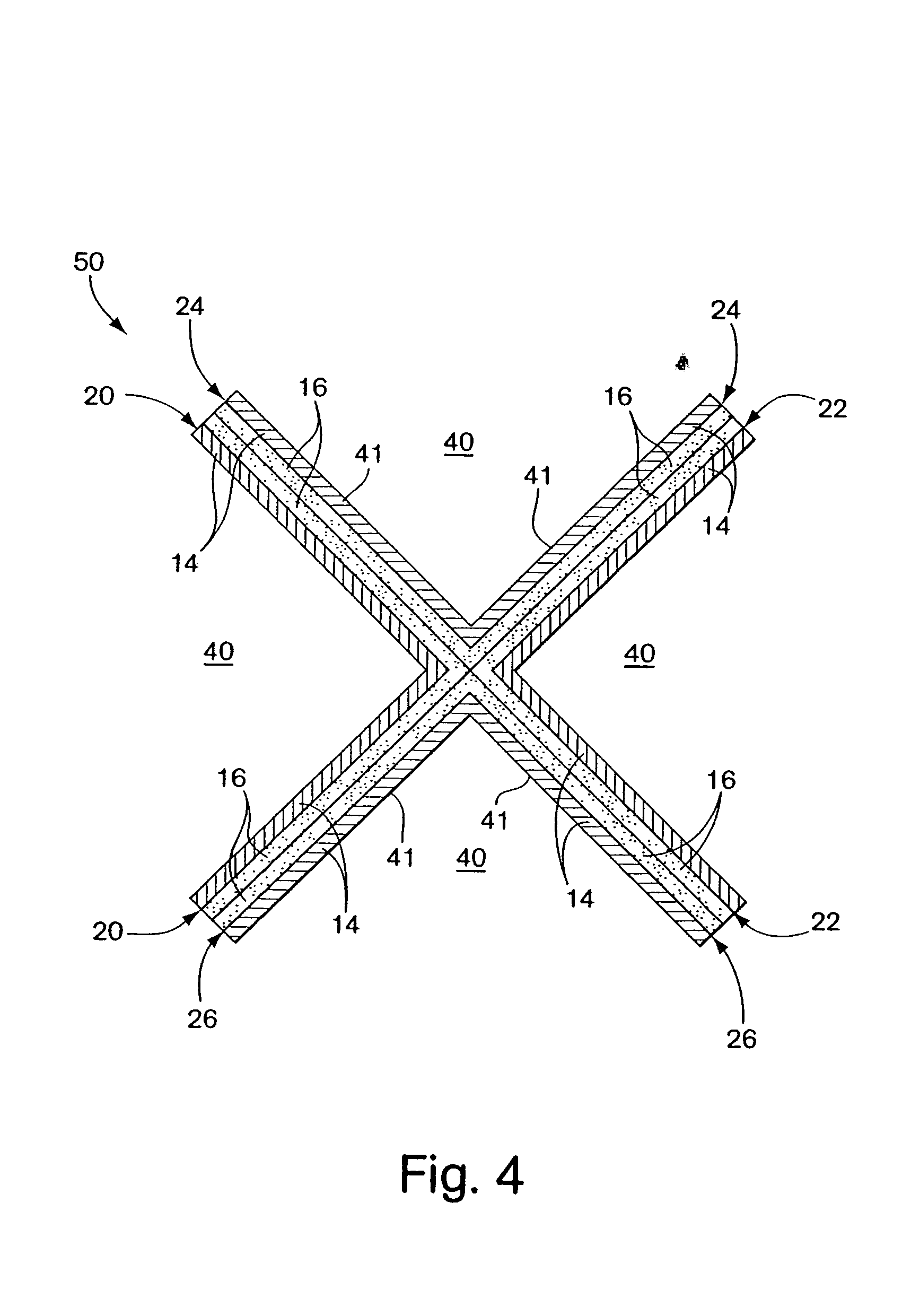Multifolded composite tape for use in cable manufacture and methods for making same
- Summary
- Abstract
- Description
- Claims
- Application Information
AI Technical Summary
Benefits of technology
Problems solved by technology
Method used
Image
Examples
first embodiment
[0041]FIGS. 2–5 illustrate cross sectional views of the multifolded composite tape according to the invention. As shown in FIGS. 4–5, the multifolded composite tape comprises a single tape configuration 50 having an X-shaped cross-section or profile. The single tape configuration 50 comprises four foil / film laminates 12, wherein each foil / film laminate is constructed as described above. The four foil / film laminates are assembled to form fin-like shielding members 41 that extend radially from a center axis or a vertical center line to define four channels or grooves 40 and the X-shaped cross section. The channels or grooves 40 extend longitudinally along a length of the single tape. The foil / film laminates are assembled into the single tape configuration 50 in such a manner that the foil layers 14 are oriented on the exterior surfaces of the single tape configuration to face or define each channel or groove 40.
[0042]As shown in FIG. 2, the single X tape configuration 50 is achieved b...
second embodiment
[0048]Referring to FIGS. 6–8, cross-sectional views of the multifolded composite tape according to the invention are depicted. In this embodiment, the composite tape 60 comprises a single laminate 60 having a width sufficient to fold lengthwise into a multiple of pleats and a length substantially greater than the width to form a strip of continuous material to assemble a single tape configuration.
[0049]The single laminate 60 is similarly constructed as the laminate described with reference to FIG. 1. As shown, in FIG. 6, the single laminate 60 comprises at least one layer of a first material, such as a conductive material 14, having a length substantially longer than a width to form a strip of suitable dimensions to construct a single continuous tape. In one embodiment, the conductive material includes, although is not limited to, a metallic foil comprised of a conductive metal suitable for use in data transmission cables such as, for example, aluminum, copper, tinned copper, silver...
fifth embodiment
[0068]Referring to FIG. 13, the invention provides a communications cable 300 comprising a multifolded composite shielding tape 330 to separate and shield a multiple of conductors 320. The communications cable 300 comprises a jacket 310, a multifolded composite shielding tape 330 situated within and longitudinally coextensive with the jacket 310, and a multiple of conductors 320 disposed between fin-like shielding members 330a, 330b, 330c and 330d of the composite tape 330. As shown in FIG. 13, in one embodiment of the invention, the cable 330 includes four twisted pairs of insulated conductors 320a, 320b, 320c and 320d and the composite tape 300 defines an initial X-shaped cross-section or profile. The four fin-like shielding members 330a, 330b, 330c and 330d extend radially from a center axis or a vertical center line of the composite tape 330 and terminate proximate to the jacket 310. The four shielding members 330a, 330b, 330c and 330d define four channels or grooves 340a, 340b,...
PUM
 Login to View More
Login to View More Abstract
Description
Claims
Application Information
 Login to View More
Login to View More - R&D
- Intellectual Property
- Life Sciences
- Materials
- Tech Scout
- Unparalleled Data Quality
- Higher Quality Content
- 60% Fewer Hallucinations
Browse by: Latest US Patents, China's latest patents, Technical Efficacy Thesaurus, Application Domain, Technology Topic, Popular Technical Reports.
© 2025 PatSnap. All rights reserved.Legal|Privacy policy|Modern Slavery Act Transparency Statement|Sitemap|About US| Contact US: help@patsnap.com



